Historical Sites
Baltimore & Ohio Railroad
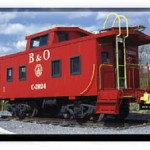
The B&O by-pass through Bladensburg was once the main line of the Washington-Baltimore Railroad, completed in 1832, the first railroad in the United States.
Barney Memorial
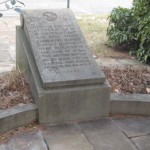
Commodore Joshua Barney Memorial
Battle of Bladensburg
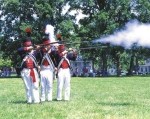
In July, 1814, after the British fleet had been in control of the Chesapeake Bay for more then a year, a separate military command was created under Brigadier General William Winder, for the defense of Washington, Maryland, and eastern Virginia. General John Armstrong, the Secretary of War, thought this was more than enough to protect the Capital.
Bostwick
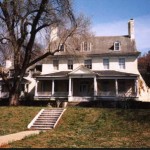
Bostwick is one of only four pre-Revolutionary War structures still standing in Bladensburg, Maryland. It was a grand home, built for Christopher Lowndes who was a leading citizen and local merchant in Bladensburg. His trading company imported spices, building materials, dry goods, and slaves. He also owned a shipyard where ocean-going vessels were constructed as well as a ropewalk that manufactured the cordage necessary for shipping lines.
Dueling Grounds
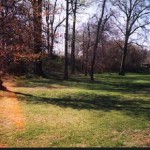
In the ravine just north of the Fort Lincoln Cemetery amidst a cluster of trees was the famous Bladensburg Dueling Ground where more than fifty duels were fought during the first half of the 19th century.
Evergreen Cemetery
The Evergreen Cemetery, located near the intersection of 52nd and Newton Streets, was once called the Presbyterian Cemetery. It was deeded to adherents of the faith by Archibald Edmonston on August 25, 1725.
First Balloon Ascension
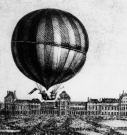
On Friday, June 19, 1784, at about 3:00 in the afternoon, in the town of Bladensburg, Peter Carnes presented the first exhibition of the ascension of his Aerostatic Balloon. The Balloon that Carnes had constructed measured 35 feet in diameter and was estimated to have been 30 feet high.
Free Hope Baptist Church
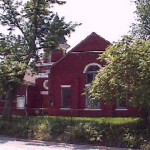
History tells us that members of the Bladensburg Presbyterian Church were an influential force during the forming years of the Republic.
Indian Queen Tavern
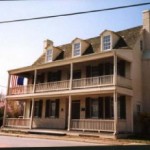
This old building, dating back to 1732, was once an inn along a major north-south route in the town of Bladensburg, Maryland.
Magruder House
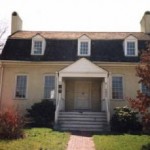
Built c. 1743 by William Hillary. It was once owned by Dr. Harvey and is believed to have been visited by General Washington. The General mentions in his Revolutionary War diary that he visited “the doctor’s house in Bladensburg.”
Market Master’s House
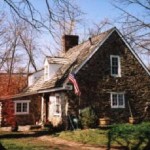
Completed by Christopher Lowndes in 1760. It is the only remaining example of the simple structure which met minimal requirements for lot improvement in Colonial Bladensburg.
Memorial Cross
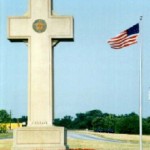
Known also as “Peace Cross.” The Snyder-Farmer Post of the American Legion of Hyattsville erected the forty foot cross of cement and marble to recall the forty-nine men of Prince George’s County who died in World War I. The cross was dedicated on July 13, 1925, by the American Legion.
Ninian Beall
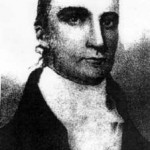
Ninian Beall was an immigrant from Scotland who started his life in America as an indentured servant and ended up as a major landowner and merchant. In 1675 he was one of those poor inland farmers who took part in Bacon’s Rebellion.
Original Plan of 1742
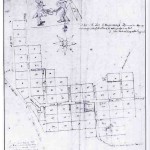
The General Assembly of Maryland in 1742 passed an act for “laying out and erecting a town on the South Side of the Eastern Branch of the Potowmack [sic] River … near a place called Garrison- Landing.”
Port O’ Bladensburg
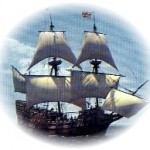
Forty-six years after the founding of Prince George’s County, a group of leading citizens saw the need for a port to cater to the tobacco growers of the Eastern Branch of the Potomac River. The site chosen to render this service to the area was Bladensburg on the Anacostia River. The mouth of the Anacostia was one mile wide and twenty to forty feet deep, thus making Bladensburg the best protected port in the region and was referred to as, “one of the safest and most commodious harbors in America, being sufficiently deep for the largest ships for about four miles above its mouth.” Thus, the Town of Bladensburg was established in 1742.
Spa Springs
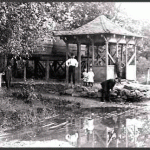
Spa Springs, a natural spring, was located on 46th Street, between Upshur Street and Windom Road. Since the early 1800′s the springs were noted for their medicinal properties. The waters were considered, “so powerful and salutary as to be of great benefit to all classes of persons.” Doctors concurred in the opinion that these waters be prescribed for their curative powers
War Memorials
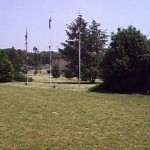
War memorials at the Waterfront Park include World War II, Korea, and Viet Nam.


